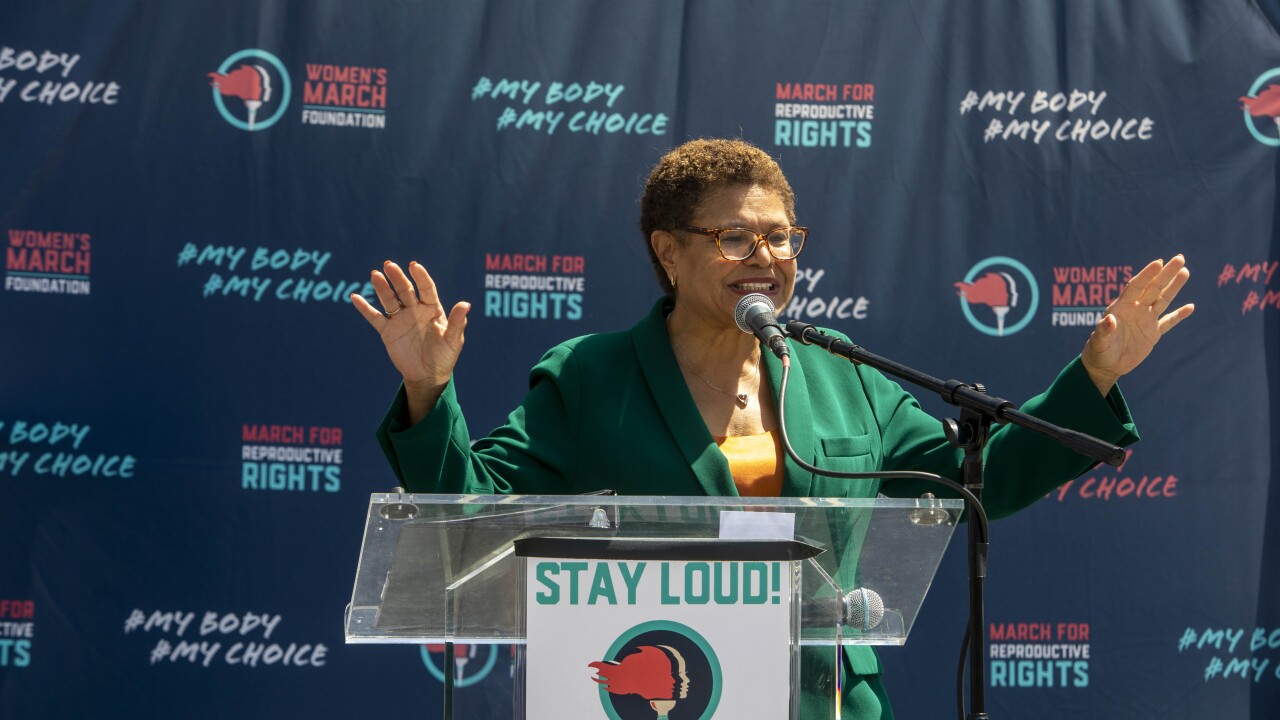CHICAGO — Hamilton County, Ohio, commissioners are expected to vote tomorrow on selling up to $20 million of lease-backed debt in order to build up a general fund reserve that has declined steeply over the last few years, prompting analysts at Moody’s Investors Service to warn of a possible downgrade. The proposal comes two weeks after voters rejected a plan that would have lifted the county’s sales tax to 7% from 6.5% and raised roughly $65 million to build a new jail and pay for several ongoing public safety programs. Since mid-2006, the county board has borrowed $13 million out of operating reserves to finance the public safety programs, expecting to reimburse the reserve with the new sales tax revenue. The reserve has declined to roughly $9 million from $30.7 million in December 2005. Noting the sales tax defeat — which means the reserve will not be reimbursed as expected — and a “deteriorating cash position,” Moody’s last week put the Aa2-rated county on watch list for possible downgrade, affecting up to $116 million of general obligation debt. Neither Standard & Poor’s nor Fitch Ratings rates the county’s GOs. The proposed bonds would be secured with the lease payments made on a county-owned rehabilitation hospital currently rented by Health Alliance. The plan to securitize the future lease payments is an attempt to address analysts’ concerns, said assistant county administrator Christian Sigman. “Our commissioners are committed to keeping our reserves strong and our bond rating intact,” and the three-member board was expected to approve the issue, Sigman said. “A big part of our response to Moody’s is dedicating the security to building up our reserves.” Hamilton County plans to enter the market with the $20 million issue in the first quarter of 2008, Sigman said. Public Financial Management will be financial adviser on the deal. The county will decide in the next few weeks whether it will hire an underwriter for a negotiated sale or take competitive bids, Sigman added. Proceeds estimated at $14 million to $18 million would go into the general fund reserve, which would be between $19 million and $23 million by the end of 2008. The county plans to pay a $4 million legal settlement in January out of the reserve. After the defeat of the sales tax referendum — the second in two years — county officials eliminated two expensive public safety programs, including one that increased sheriff patrols of an inner-city Cincinnati neighborhood. The eliminations are among a long list of budget cuts that commissioners are likely to implement to close an estimated $35 million shortfall in order to balance a $1.2 billion budget proposed by county administrator Patrick Thompson Thompson has recommended freezing salaries throughout 2008 to save $3 million, switching to a high-deductible health insurance plan for the county’s 6,500 employees to save $3.3 million, eliminating more than 100 jobs, and eliminating funding for the Ohio State University extension. Moody’s plans to meet with county officials at the end of December or early January and will decide whether to take further action within the next 90 days, said analyst Henrietta Chang. “The main thing right now is that we want to see what they’re doing in the short term in terms of immediate structural balance in the 2008 budget as well as for the longer-term pressures,” Chang said. Sales tax revenue makes up about 25% of HamiltonCounty’s total revenue and generates $65 million a year for its general fund and $65 million that largely goes to pay off debt for the county’s football and baseball stadiums.
-
The SEC has won a partial victory against Choice Advisors and its principal Matthias O'Meara for their role in acting as unregistered brokers and for engaging in a fee-splitting arrangement.
18m ago -
The trio have decades of experience in high yield and investment grade portfolios and will launch new high-yield investment strategies and vehicles for Rockefeller.
1h ago -
"The rating action reflects our view of MIA's substantial demand, which surpasses pre-pandemic activity, and its leadership in enplanement growth for large hub airports since the fiscal 2019 peak," said S&P's Nora Wittstruck.
1h ago -
A state ban on bond underwriters that "boycott" or "discriminate" against the fossil fuel or firearms industries has resulted in fewer banks providing municipal financial products and services.
3h ago -
The company expects construction to take four years, with operations beginning in summer of 2028 ahead of the Los Angeles Olympics.
4h ago -
Los Angeles Mayor Bass' proposed $12.8 billion spending plan aims to close a $467 million deficit.
4h ago





